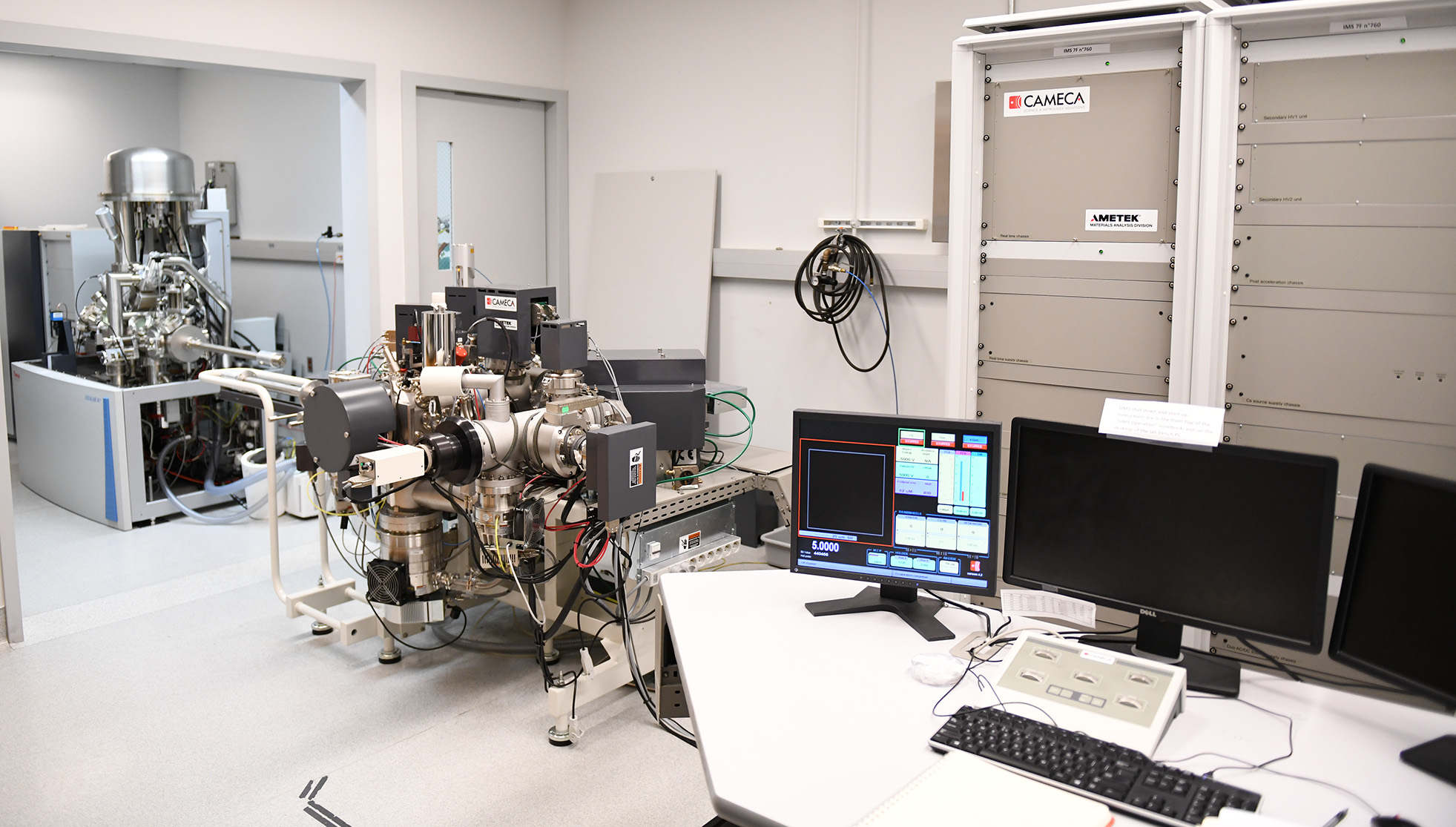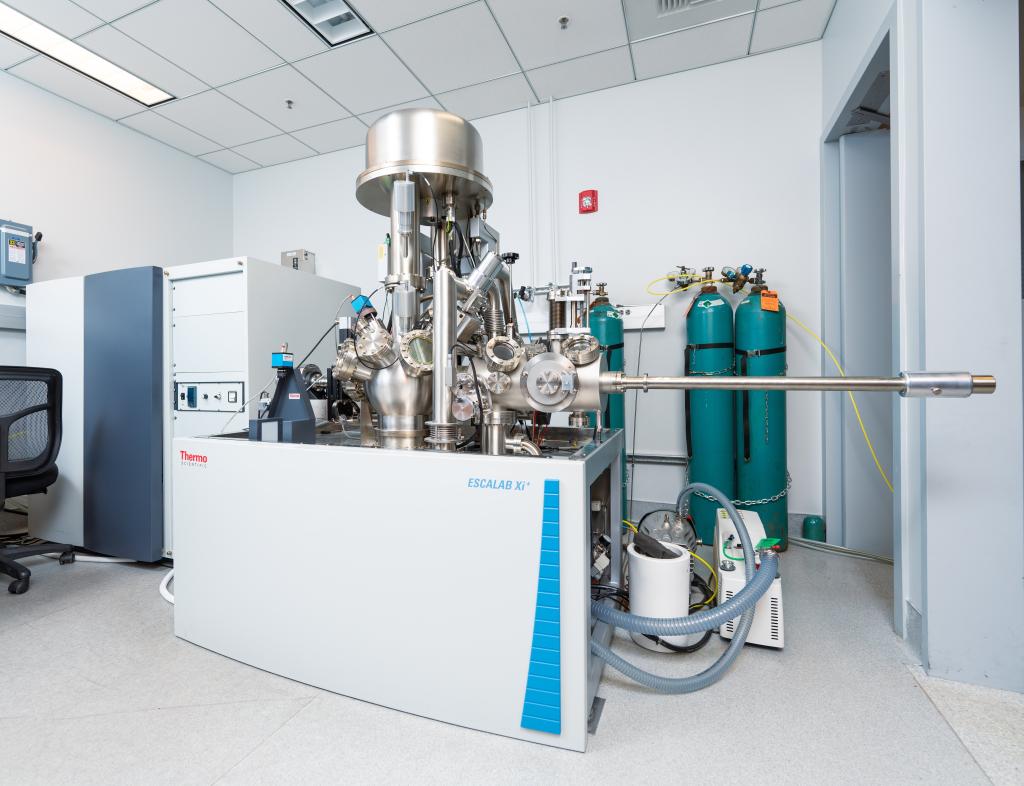In addition to the SEM microprobe, the UCSB Materials Microscopy and Microanalysis lab has three facilities for measuring the elemental and chemical makeup of the surface and near-surface regions of solid samples.
Secondary Ion Mass Spectrometry (SIMS)
SIMS, like APT a destructive method, is the most sensitive surface analytical technique, with detection limits of parts per billion in favorable cases. A focused ion beam scanning over a few hundred microns ablates the material nanometer by nanometer. Using a secondary ion mass spectrometer, the elemental composition of the samples is recorded as a function of depth (typically 50 nm to 5 micron). Results can be quantified using standards.
X-Ray Photoelectron Spectroscopy (XPS)
XPS is a non-destructive, surface-sensitive spectroscopic technique that measures the elemental composition at the parts per thousand range. Furthermore, it provides information about the chemical bonding and electronic state of the elements. The technique is based on measuring the kinetic energy of electrons that escape from the top 0 to 10 nm of the material during irradiation.

Secondary Ion Mass Spectrometry (SIMS)
SIMS is the most sensitive surface analytical technique, with detection limits of parts per billion in favorable cases. A focused cesium or oxygen ion beam is rastered over an area ranging from 25 to 200 microns of the sample surface. As the surface is ablated, the ejected secondary ions are analyzed by mass, generating a plot of elemental composition vs. depth (typically 50 nm to 5 microns of depth). Results can be quantified using standards. For smooth samples, depth resolution can approach 1 nm.
X-Ray Photoelectron Spectroscopy (XPS)
XPS is a non-destructive, surface-sensitive spectroscopic technique that measures elemental composition at the parts per thousand range. Peak shifts provide chemical bonding information. The Escalab instrument can also perform ultraviolet PS, for the analysis of the valence band (density of states, work function, highest occupied state), REELS (band gap measurement), ISS (He+ ion scattering for top monolayer analysis), and depth profiling with monatomic argon, or argon clusters.
